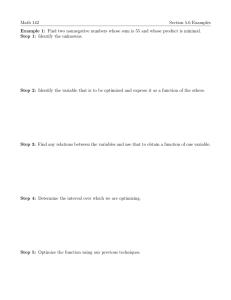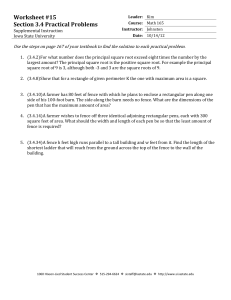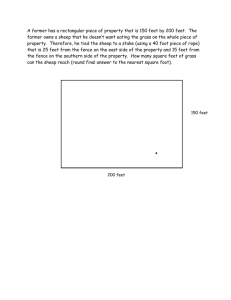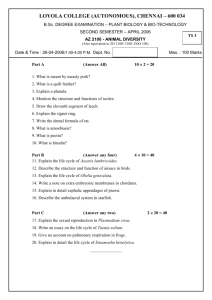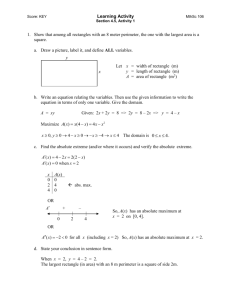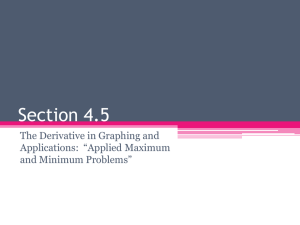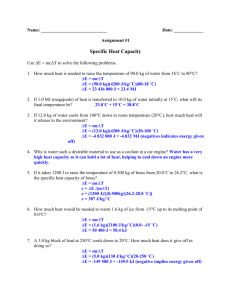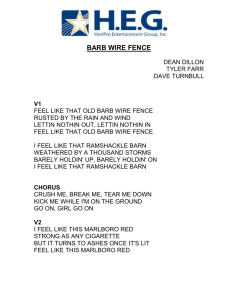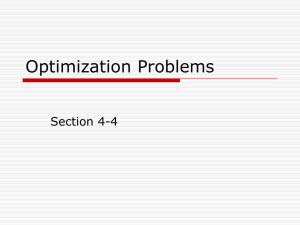Cattle Grazing-Lesson Guide
advertisement
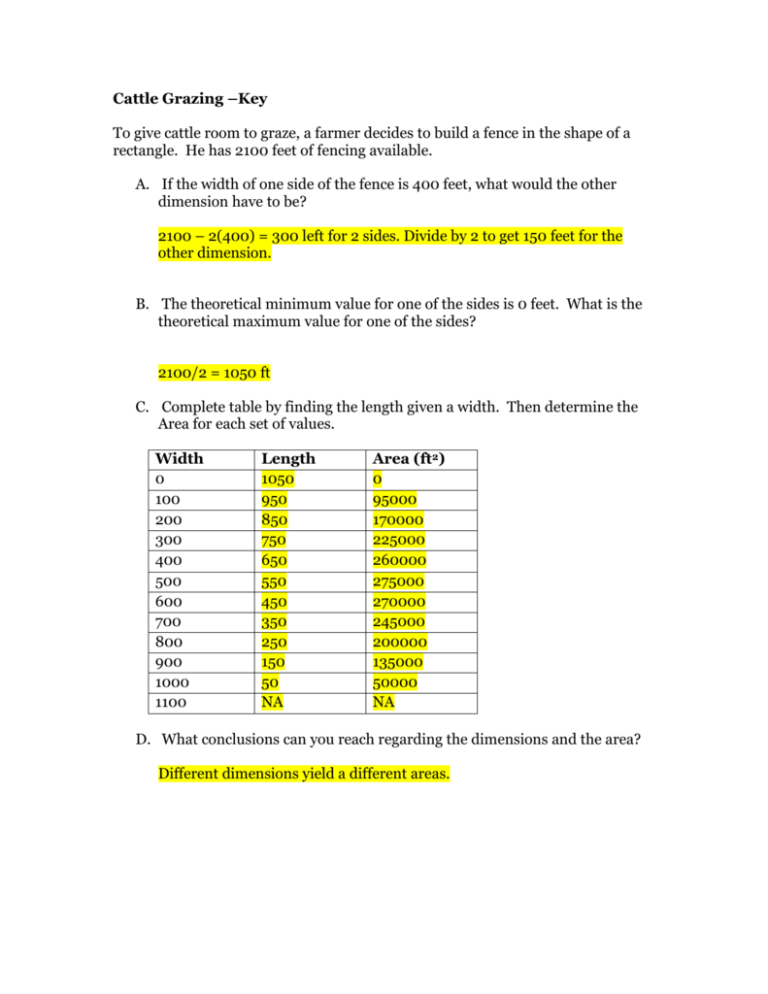
Cattle Grazing –Key To give cattle room to graze, a farmer decides to build a fence in the shape of a rectangle. He has 2100 feet of fencing available. A. If the width of one side of the fence is 400 feet, what would the other dimension have to be? 2100 – 2(400) = 300 left for 2 sides. Divide by 2 to get 150 feet for the other dimension. B. The theoretical minimum value for one of the sides is 0 feet. What is the theoretical maximum value for one of the sides? 2100/2 = 1050 ft C. Complete table by finding the length given a width. Then determine the Area for each set of values. Width 0 100 200 300 400 500 600 700 800 900 1000 1100 Length 1050 950 850 750 650 550 450 350 250 150 50 NA Area (ft2) 0 95000 170000 225000 260000 275000 270000 245000 200000 135000 50000 NA D. What conclusions can you reach regarding the dimensions and the area? Different dimensions yield a different areas. E. Use the TI-83/84 or Excel to investigate how changing the dimensions of the rectangle affects the rectangle’s area. In Excel they could set the increment to any value (100 is shown below) Extension 1. Suppose you wanted to build the fence alongside a barn. That is, the barn wall will serve as one of the sides of the fence. Assume the farmer still has 2100 ft of fencing. Use the TI-83/84 or excel to determine the maximum area. (Hint: Use increments of 25). Note: It may be easier to just put in x(2100 – 2x) into Y1. Answer: So the dimensions would be 525 ft by 1050 ft for a maximum area of 551,250 ft2 Extension 2. Suppose that the farmer wanted to place a partition down the middle of the fence and not use the barn wall as a fence side. Assume the farmer still has 2100 ft of fencing. Use the TI-83/84 or excel to determine the maximum area. The actual Max occurs when x = 16.67. You can use this to discuss the limitations of using the table.

